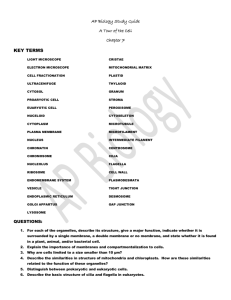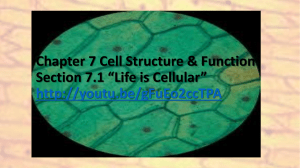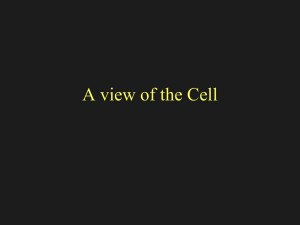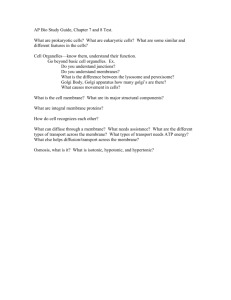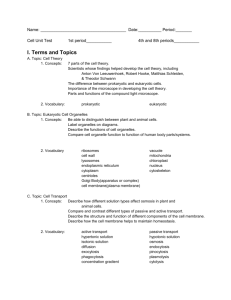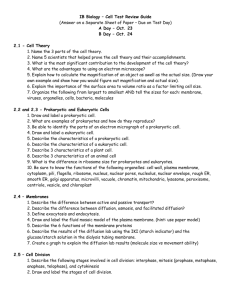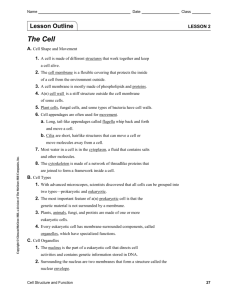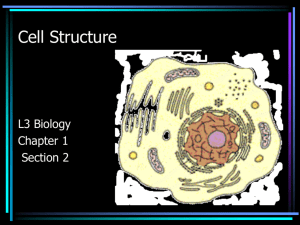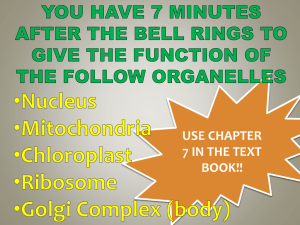Biology Chapter 7 Study Guide
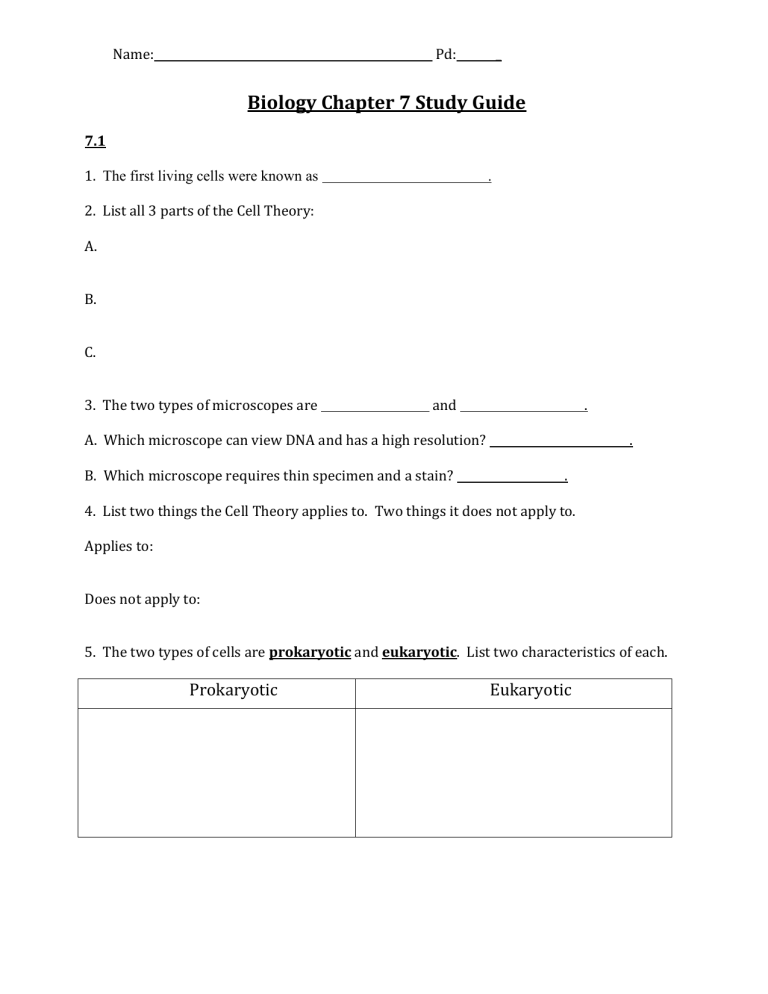
Name: Pd: _
Biology Chapter 7 Study Guide
7.1
1.
The first living cells were known as .
2. List all 3 parts of the Cell Theory:
C.
A.
B.
3. The two types of microscopes are and .
A. Which microscope can view DNA and has a high resolution?
B. Which microscope requires thin specimen and a stain? .
4. List two things the Cell Theory applies to. Two things it does not apply to.
Applies to:
.
Does not apply to:
5. The two types of cells are prokaryotic and eukaryotic. List two characteristics of each.
Prokaryotic Eukaryotic
[Type text] [Type text] [Type text]
7.2
6. In the chart using the information provided. Compare the organelles to something you see everyday.
Organelle Function Comparison
Nucleus
Produce proteins
It’s like a vacuum cleaner.
Clean, breakdown, and recycle materials.
Golgi apparatus
Batteries, power plant
7. Of the four macromolecules, which one makes up the majority of the cell membrane?
What is another name for the cell membrane using that macromolecule?
[Type text] [Type text] [Type text]
8. Water is polar. Which part of the cell membrane is polar? What is another name
“liking water”?
9. Why are the tails on the inside of the cell membrane?
7.4 and 7.3
10. organisms outnumber all other organisms on Earth.
11. Define “interdependent” in terms of cells.
12. Put the following terms in order of smallest to largest:
organ system, cell, organ, tissue.
13. Osmosis is a type of
During passive transport, materials move
, but it only moves
14. Use each word once to fill in the blanks: up, down, high, high, low, low
.
their concentration gradient from areas of concentration to
During active transport, materials move
concentration.
their concentration gradient from of concentration to concentration.
15. Which type of protein changes shape to let materials cross the membrane?
[Type text] [Type text]
16. Define isotonic, hypertonic, and hypotonic.
Draw pictures of each.
Include arrows showing how water moves.
17. Define exocytosis and endocytosis.
18. Describe each of the three methods of endocytosis.
[Type text]
[Type text] [Type text]
19. Label at least 5 of the letters on the cell below.
[Type text]
Short answer questions on back
[Type text] [Type text] [Type text]
Short answer questions:
20. How are microtubules and microfilaments similar? How are they different?
21. There are two types of endoplasmic reticulum. What does each one do?
22. Compare 2 organelles to something you see in everyday life. Explain how the function of the organelles and everyday-objects are similar.
23. Is the cell on the previous page a plant cell or and animal cell? How do you know?
24. Draw the cell membrane. Include and label: lipid bilayer, (2) hydrophilic heads, hydrophobic tails, and a protein channel.
25. The sodium-potassium pump is a protein that moves sodium (Na+) and potassium (K+) into and out of the cell.
A: What type of transport does the Na+-K+ pump undergo?
B: What is moved into the cell, out of the cell, and how much of each?
C: If the Na+-K+ pump changes shape, then what type of transport protein is it?
